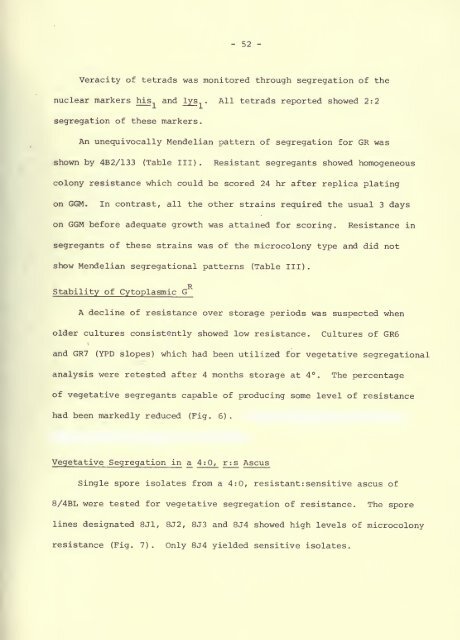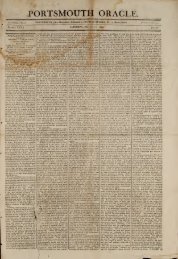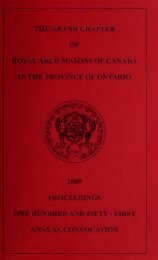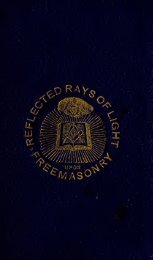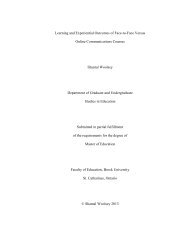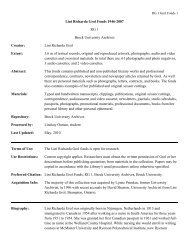View/Open - Brock University
View/Open - Brock University
View/Open - Brock University
You also want an ePaper? Increase the reach of your titles
YUMPU automatically turns print PDFs into web optimized ePapers that Google loves.
52 -<br />
Veracity of tetrads was monitored through segregation of the<br />
nuclear markers his and lys . All tetrads reported showed 2:2<br />
segregation of these markers.<br />
An unequivocally Mendelian pattern of segregation for GR was<br />
shown by 4B2/133 (Table III) . Resistant segregants showed homogeneous<br />
colony resistance which could be scored 24 hr after replica plating<br />
on GGM. In contrast, all the other strains required the usual 3 days<br />
on GGM before adequate growth was attained for scoring. Resistance in<br />
segregants of these strains was of the microcolony type and did not<br />
show Mendelian segregational patterns (Table III)<br />
Stability of Cytoplasmic G<br />
A decline of resistance over storage periods was suspected when<br />
older cultures consistently showed low resistance. Cultures of GR6<br />
and GR7 (YPD slopes) which had been utilized for vegetative segregational<br />
analysis were retested after 4 months storage at 4°. The percentage<br />
of vegetative segregants capable of producing some level of resistance<br />
had been markedly reduced (Fig. 6)<br />
Vegetative Segregation in a_ 4:0, r :s Ascus<br />
Single spore isolates from a 4:0, resistant: sensitive ascus of<br />
8/4BL were tested for vegetative segregation of resistance. The spore<br />
lines designated 8J1, 8J2, 8J3 and 8J4 showed high levels of microcolony<br />
resistance (Fig. 7) . Only 8J4 yielded sensitive isolates.


